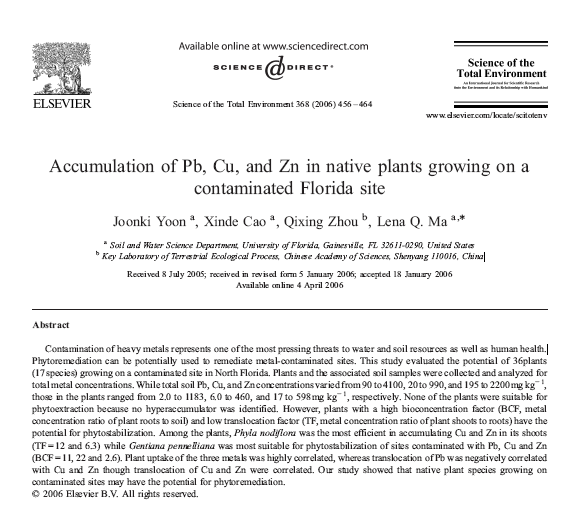Accumulation of Pb, Cu, and Zn in native plants growing on a contaminated Florida site
2017-11-27
Joonki Yoon, Xinde Cao, Qixing Zhou, Lena Q. Ma
Abstract
Contamination of heavy metals represents one of the most pressing threats to water and soil resources as well as human health. Phytoremediation can be potentially used to remediate metal-contaminated sites. This study evaluated the potential of 36plants (17species) growing on a contaminated site in North Florida. Plants and the associated soil samples were collected and analyzed for total metal concentrations. While total soil Pb, Cu, and Zn concentrations varied from 90 to 4100, 20 to 990, and 195 to 2200mg kg−1, those in the plants ranged from 2.0 to 1183, 6.0 to 460, and 17 to 598mg kg−1, respectively. None of the plants were suitable for phytoextraction because no hyperaccumulator was identified. However, plants with a high bioconcentration factor (BCF, metal concentration ratio of plant roots to soil) and low translocation factor (TF, metal concentration ratio of plant shoots to roots) have the potential for phytostabilization. Among the plants, Phyla nodiflora was the most efficient in accumulating Cu and Zn in its shoots (TF=12 and 6.3) while Gentiana pennelliana was most suitable for phytostabilization of sites contaminated with Pb, Cu and Zn (BCF=11, 22 and 2.6). Plant uptake of the three metals was highly correlated, whereas translocation of Pb was negatively correlated with Cu and Zn though translocation of Cu and Zn were correlated. Our study showed that native plant species growing on contaminated sites may have the potential for phytoremediation.
